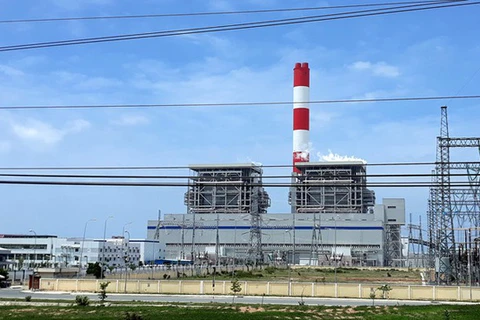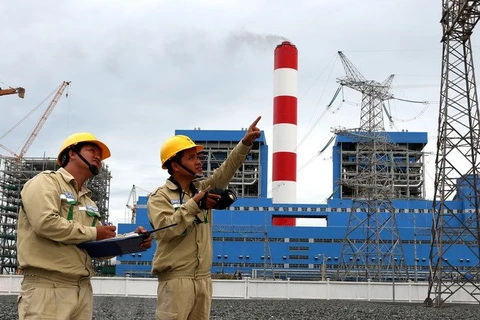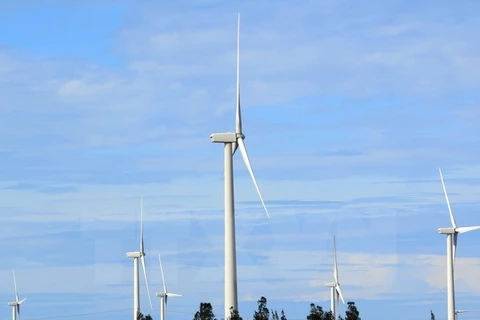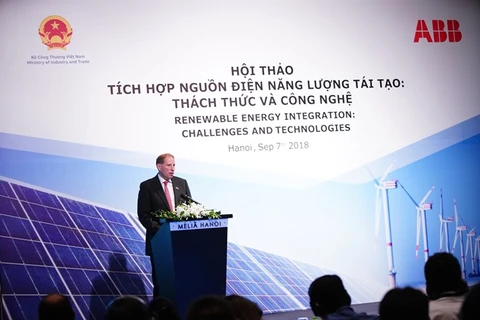Hanoi (VNA) – As thermal power accounts for the largest proportion of Vietnam’s energy production, the country is facing challenges to ensure sufficient supply of coal for thermal power plants in the coming years.
According to President of the Vietnam Association of Thermal Science and Technology Truong Duy Nghia, coal-fired thermal power has dominated the country’s energy market, particularly in southern provinces. It is largely due to the fact that hydropower, also popular in Vietnam, requires spaces for reservoirs and large evacuation for facility construction in spite of its low prices, environmental friendliness and short building time. Meanwhile, most of natural resources for the development of hydropower plants have been almost used up, he noted.
Renewable energies like wind power, solar power or biomass are environmentally friendly but generation of these types of electricity has remained low, equivalent to only one fifth or one sixth of the thermal power production while they heavily depend on natural resources and weather conditions, making their prices relatively high.
Gas-fired thermal power faces similar issues in terms of cost as the operation and maintenance costs for a facility are very expensive, almost doubling those of the coal-fired thermal power while gas supply is limited.
According to the Ministry of Industry and Trade (MoIT), by 2020, Vietnam is expected to produce about 26,000 MW of coal-fired thermal power, accounting for 49.3 percent of the total electricity generation and consuming about 63 million tonnes of coal. By 2030, the production of coal-fired thermal electricity will increase to 55,300 MW of power, representing 53.2 percent of the total generation and consuming 129 million tonnes of coal.
It was estimated that to provide sufficient supply of fuel for coal-fired power plants, Vietnam will have to import about 90 million tonnes of coal a year after 2030, which puts the country under great pressure.
Since 2016, Vietnam has started importing coal which was input for Duyen Hai 3 Thermal Power Plant. In 2017, imports of coal totalled 4.5 million tonnes and it is likely to rise to about 24 million tonnes by 2020.
Le Van Luc, deputy head of the MoIT’s Electricity and Renewable Energy Authority, said if demand for coal keeps increasing, the ministry will propose the government to adopt a special mechanism for thermal power producers to sign long-term contracts for coal imports and allow them to hold ownership of coal mines abroad to stabilise the coal supply for electricity production.
He further noted that the ministry is drafting a plan for national power development for 2020 – 2030 with a post-2030 vision, which will also take the supply of coal for power generation into consideration. –VNA
According to President of the Vietnam Association of Thermal Science and Technology Truong Duy Nghia, coal-fired thermal power has dominated the country’s energy market, particularly in southern provinces. It is largely due to the fact that hydropower, also popular in Vietnam, requires spaces for reservoirs and large evacuation for facility construction in spite of its low prices, environmental friendliness and short building time. Meanwhile, most of natural resources for the development of hydropower plants have been almost used up, he noted.
Renewable energies like wind power, solar power or biomass are environmentally friendly but generation of these types of electricity has remained low, equivalent to only one fifth or one sixth of the thermal power production while they heavily depend on natural resources and weather conditions, making their prices relatively high.
Gas-fired thermal power faces similar issues in terms of cost as the operation and maintenance costs for a facility are very expensive, almost doubling those of the coal-fired thermal power while gas supply is limited.
According to the Ministry of Industry and Trade (MoIT), by 2020, Vietnam is expected to produce about 26,000 MW of coal-fired thermal power, accounting for 49.3 percent of the total electricity generation and consuming about 63 million tonnes of coal. By 2030, the production of coal-fired thermal electricity will increase to 55,300 MW of power, representing 53.2 percent of the total generation and consuming 129 million tonnes of coal.
It was estimated that to provide sufficient supply of fuel for coal-fired power plants, Vietnam will have to import about 90 million tonnes of coal a year after 2030, which puts the country under great pressure.
Since 2016, Vietnam has started importing coal which was input for Duyen Hai 3 Thermal Power Plant. In 2017, imports of coal totalled 4.5 million tonnes and it is likely to rise to about 24 million tonnes by 2020.
Le Van Luc, deputy head of the MoIT’s Electricity and Renewable Energy Authority, said if demand for coal keeps increasing, the ministry will propose the government to adopt a special mechanism for thermal power producers to sign long-term contracts for coal imports and allow them to hold ownership of coal mines abroad to stabilise the coal supply for electricity production.
He further noted that the ministry is drafting a plan for national power development for 2020 – 2030 with a post-2030 vision, which will also take the supply of coal for power generation into consideration. –VNA
VNA
























